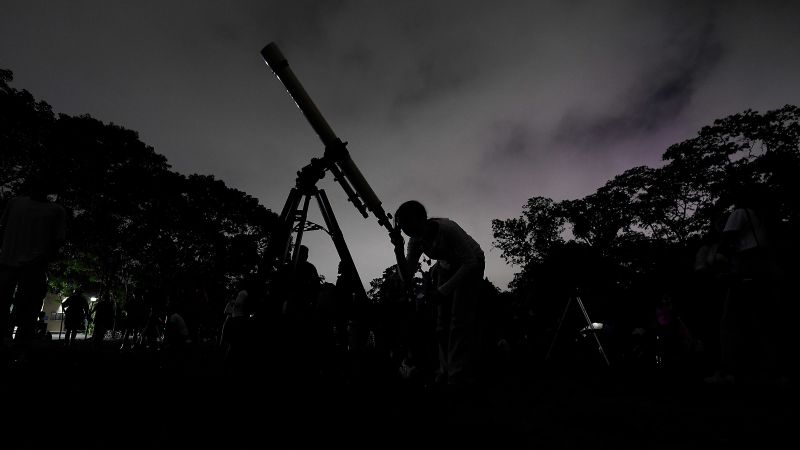 More details: See here
More details: See hereIn The News:
What's Up: June 2024 Skywatching Tips from NASA - NASA ScienceSaturn and Mars meet up with the Moon, Jupiter returns at dawn, and tips for identifying some common objects seen in the sky.
"Planet Parade" note : Some online sources have shared excitement about a "parade of planets" visible in the morning sky in early June (June 3 in particular). In reality, only two of the six planets supposedly on display (Saturn and Mars) will actually be visible. In early June, Jupiter and Mercury will be at or below the horizon in morning twilight and not visible; Uranus and Neptune are far too faint to see without a telescope, especially as the morning sky brightens. The closest thing to a planet parade will be June 29, when Saturn, the Moon, Mars, and Jupiter will line up across the morning sky. This arrangement persists into July, and we'll talk more about that lineup in the next "What's Up" video.
A "planet parade" during which six planets will appear to align in the sky near dawn is on the way, but only three planets will be visible with the naked eye — and the phenomenon is more common than it sounds.
"You'll be able to see Mars, Saturn and Jupiter," said Dr. James O'Donoghue, a planetary astronomer and research fellow at the University of Reading in the United Kingdom. "If you have binoculars and if you know where to look, you could probably see Uranus, but there's not much point in waiting until nearly sunrise — you might as well do that earlier in the night. Bottom line is that you can only see about half the planets in this planetary lineup with a naked eye."
The best day to see the spectacle in Europe and North America will be Sunday, about half an hour before sunrise, according to O'Donoghue. Aiming for that time frame would give you a chance to spot Mercury as well, although it might not be easy even with binoculars, he said.
"The problem is that the sun will be illuminating the sky in that area," O'Donoghue added. "It's just before the sunrise, but it will still be very, very bright in the sky, and you probably don't want to be pointing your binoculars near the sun either."
If you have one, a telescope would help, especially if you're hoping to spot Uranus and Neptune. "But to actually be able to see these, you need to be zooming in to one target so much that you're not seeing the others anyway, so you'd be getting rid of all your field of view," he said.
It's important to note that this alignment is not happening in space, but just in the sky as seen from our planet.
No comments:
Post a Comment